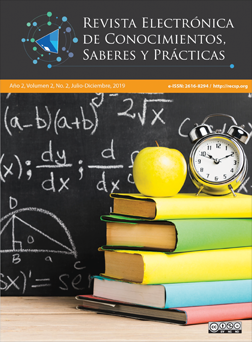Tripartite division of contents. Modeling in a didactic proposal of Social Sciences
DOI:
https://doi.org/10.5377/recsp.v2i2.9304Keywords:
Learning process, Tripartite division, Content, Teaching UnitAbstract
This article is the product of a documentary research carried out in different sources of written information about the tripartite division of contents, whose findings were enriched with the contributions of different experts in the area of educational research, in order to present to Highschool Education teachers solid theoretical foundations that can be extrapolated to their educational practice. Subsequently, it was proceeded to build or design a didactic unit of the content: Relation between supply and demand in the subject of Economy (studied in 10th grade of Highschool Education), with the objective of modelling the practical application of the tripartite conception of the contents. In addition, it is intended that this didactic planning structure serves as a model for the implementation of the competency-based approach, an educationalmodel declared in the curricular document of the Ministry of Education (MINED Spanish acronym) of our country. The didactic proposal is composed of eight class plans and contains the three moments of the learning process (exploration of previous constructs, introduction of new knowledge or its restructuring and the application of new ideas to the solution of problems).
Downloads
1773
Resumen (Audio) (Español (España)) 246
Abstract (Audio) 238
Published
How to Cite
Issue
Section
License
At the moment in which a work is accepted for publication, it is understood that the author gives the Electronic Magazine of Knowledge and Practice (RECSP) exclusive rights of reproduction, distribution and sale of his manuscript for exploitation in all countries of the world in paper magazine format, as well as in any other magnetic, optical and digital media. The authors will also transfer to RECSP the rights of public communication for its dissemination and exploitation through Intranets, Internet and any wireless portals and devices decided by the publisher, by making available to users for online consultation of its content and its extract. , for printing on paper and / or for downloading and filing, all in the terms and conditions that appear on the website where the work is housed. In turn, the RECSP authorizes the authors of the works published in the journal to offer a copy of these works once published on their personal webs or in any open access repository. Together with this copy, a specific mention of the RECSP must be included, citing the year and the number of the journal in which the article or research note was published and adding, in addition, the link to the RECSP website.

